You are here
Oases of Central Asia.
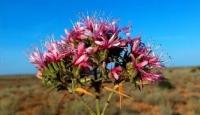
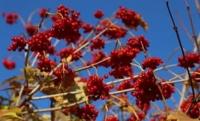
Wonders of Silk Road.
“The earth laughs in flowers.”
Ralph Waldo Emerson.
Silk Road Adventures Tours.
The cultural landscapes of the oases are in sharp contrast to desert landscapes. Oases are usually located on suitable for processing fertile (gray terrestrial, etc.) soils (loess, loamy, etc.), confined mainly to the peripheral parts of the fans, river terraces and deltas.
The ability to supply irrigation water by gravity determines the most common location of oases along aquifer rivers and at the foothills of mountain systems on the foothill plains, mainly near the mountains, where ridges with perpetual snow and glaciers from where flowing rivers flow.
A typical example in this respect is the Fergana Valley, where the inner part with reclaimed desert landscapes is surrounded by an almost continuous ring of oases, but this ring is broken in the north-west, at the foot of the Kuramin Range, which has no glaciers, and the rivers are shallow.
Sometimes groundwater is used for irrigation, which, with the help of underground horizontal galleries - Kahrez (ancient name watercourse) - is also drawn by gravity to the surface. Kahrez system at the foot of the Kopetdag and in the western spurs of the Pamir-Alai mountain system (in the valley between the Nuratau and Aktau ridges).
Separate small oases are fed by groundwater (the Tamdynsky oasis in the Kyzylkum desert) and by artesian wells (the Karakat and Ayakagtym basins in the same desert). In terms of climate, oases differ from neighboring deserts not only in the magnitude of humidity, which is increased here, but also in temperature indicators: in summer in oases it is about 3 ° cooler and in winter 0.2 - 0.4 ° warmer.
These differences arise from the restructuring of the heat balance. In the summer in the desert, most of the solar energy is expended on heating the surface layers of the soil with their subsequent heat release to the lower layers of air (turbulent heat exchange), which causes a sharp increase in the temperature of these layers.
In the oases, however, the main part of the received solar heat is spent on total evaporation (including transpiration), the cost of heat for the turbulent heat exchange is reduced. Due to this, the temperature in the oases somewhat decreases, the humidity of the air increases, in addition, its dustiness decreases, and the wind speed decreases.
An extensive network of irrigation canals and irrigation canals is a kind of hydraulic network. It causes soils in processes inherent in the natural regime of floodplain river valleys. Hydromorphic processes arise or are restored (if the oasis is located at the bottom of the river valley or in the delta).
The soils of the oases differ significantly from the natural soils of their predecessors. Under the influence of irrigation and the effect of irrigated crops, the water, heat and biological regime of the soil changes, which causes a change in their upper layers.
Natural features of the original soil type are preserved only in the depth of the soil section. Such soils are called irrigated sierozems, irrigated sierozem-meadow, irrigated takyr, etc. Since the age of some oases of Central Asia (Samarkand, Bukhara, Mary, and others) is estimated at several millennia, the soils of these oases in some places have completely lost their signs of the original natural types. The soils of such areas of ancient irrigated agriculture are called irrigated.
These essentially anthropogenic soils have arisen under the influence of centuries-old irrigation of cultivated irrigation sediments from small turbid waters on small lands. The annual layering of irrigation sediments (up to 0.5 – 1 mm / year) led to an increase in their thickness up to 1–2 m or more (in some cases up to 4 m), and the former natural soils were buried beneath them.
The process of accumulation of sediments was intensified by the fact that earth masses from loess mounds and old duvali (clay fences) were used as fertilizer.
For old irrigated soils of Central Asia are characteristic:
1) low humus content (1 – 2%), a large humus thickness of the horizon and a relatively uniform distribution of humus throughout the thickness of the cultural irrigation layer;
2) homogeneous structure and homogeneous medium and heavy loamy mechanical composition;
3) high saturation (up to 1 meter and deeper) active microflora;
4) the absence of carbonate, gypsum and salt horizons.
Due to fertilization and the introduction of irrigated alfalfa and old irrigated soils in the crop rotation, 4 - 5 times more nitrogen is present than natural.
Under conditions of insufficient drainage with unlimited watering, groundwater is raised, leading to secondary salinization or even waterlogging of the soil.
Both sharply reduce soil fertility. Lands with secondary salinization, which are already in the stage of various salt marshes (meadow and plump), are especially common along the periphery of irrigated oases. The oases are dominated by cultural vegetation, consisting of agricultural crops and forest park plantings, which give the oases a distinctive appearance and contrast with the surrounding deserts.
Gardens and parks in villages and towns, groves and shelter belts give the man-made landscape of oases the features of a forest nature. The abundance of water and heat, the duration of the growing season, relatively high winter temperatures are favorable for the growth of trees and shrubs.
Representatives of the local oasis dendroflora are characterized by English elm (Ulmus campestris) (elm), willow, mulberry, pyramidal poplar, poplars and Asiatic poplar (Populus diversifolia), Russian olive (Elaeagnus angustifolia).
In cities and villages grow walnuts, Chinara (platan) and other people from the mountainous regions of Central Asia. In the composition of the forest-park vegetation there are a lot of foreign plants: white acacia, species of maples, which came from the humid subtropics of the catalpa, cypress cypress.
Among the crops in the first place in terms of area and economic value is cotton. Of the fiber crops, kenaf and jute are also cultivated; from grain crops - corn, rice, grain sorghum, wheat, barley, millet; from oilseeds - sesame, castor bean, sunflower.
The main food source is alfalfa. A variety of vegetable crops and melons (melons, watermelons, pumpkins) are grown. From fruit crops, including walnut, many local, Central Asian origin: apricot, almond, walnut, pistachio, pomegranate, cherry plum, some apples, pears.
Peaches are common in orchards. Great variety of grapes. Vegetation of weathered type from saltworts, camel's thorn, develops on deposits. There are areas with marsh vegetation. Various weeds penetrate the fields.
Oases give shelter to a variety of animals. The fauna of the oases, according to D. Kashkarov, consists not of its own special animals, but consists of newcomers of different landscapes: of the desert, steppe, mountain gorges with tree thickets.
But thanks to the special conditions it is peculiar. In the irrigated land, rodents cannot dig and live. Changes in vegetation lead to changes in insectivorous and granivorous birds. Influenced and built person. In the oases live only animals that do not avoid humans.
Many of them are his “freeloaders” (sparrows, mice, rats) or use his dwelling as a refuge (turtle doves, swallows, bats). For oasis biotopes are characterized bats - bat-dwarf, Turkmen; Turkestan rat, Central Asian house mouse, slate rat, various types of hedgehogs.
Gecko lizards find refuge in the cracks of clay duvalas (clay fence) and in the crevices of the adobe walls of residential buildings. Everywhere is a common green toad. Of the birds, the most characteristic are the small turtle dove, sparrows, (Acridotheres tristis), the shrike, the barn swallow, the hoopoe (Upupa epops), the stork.
Thus, the oases differ sharply from the adjacent deserts in the whole range of natural conditions, which is primarily associated with irrigation of lands, cultivation of crops, artificial tree planting, dense settlement. It is quite natural to consider oases as man-made landscapes.
The largest oases are distinguished as special physiographic areas. Its main population is concentrated in the oases of Central Asia, as well as numerous branches of the economy: arable farming (especially cotton growing), viticulture and horticulture, breeding of mulberry worm, the industry for processing agricultural raw materials.
The most important oases of Central Asia - Ferghana, Tashkent, Golodnostepsky, Samarkand, Bukhara, Karshi, Hissar, Vakhsh, Chardzhou, Khorezm, Mary, Tejen, Kopetdag, Atreksky, Lower-Syrdarya, Talas, Chui, Almaty.

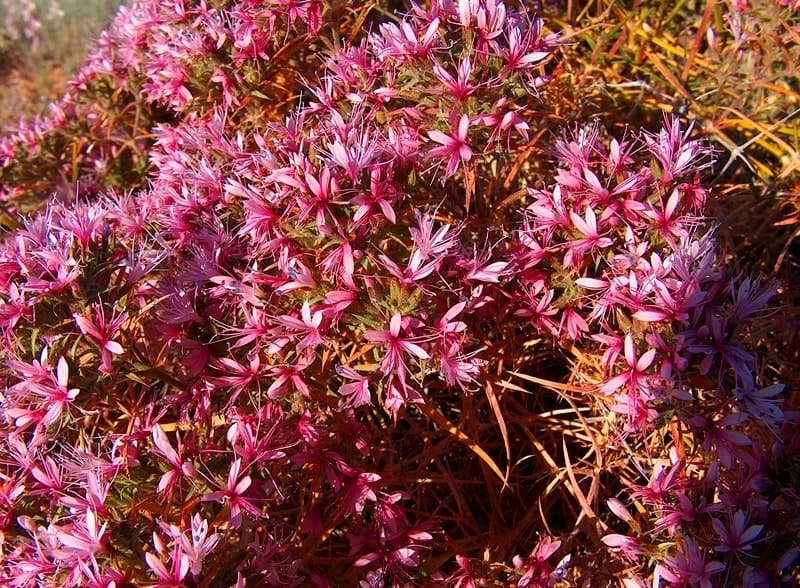
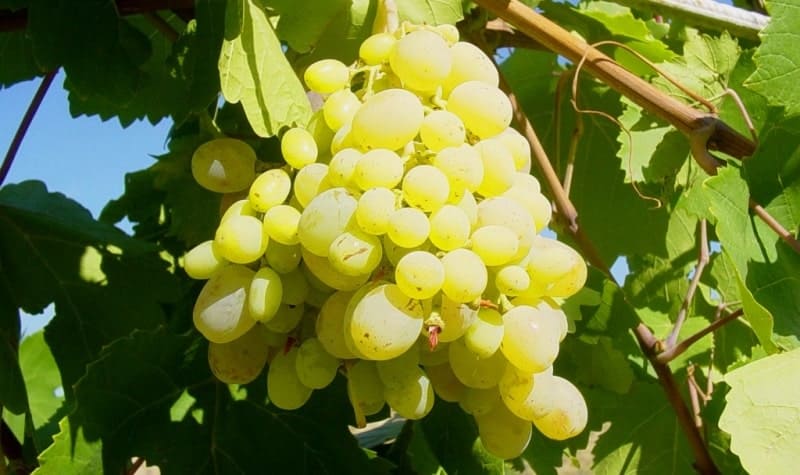
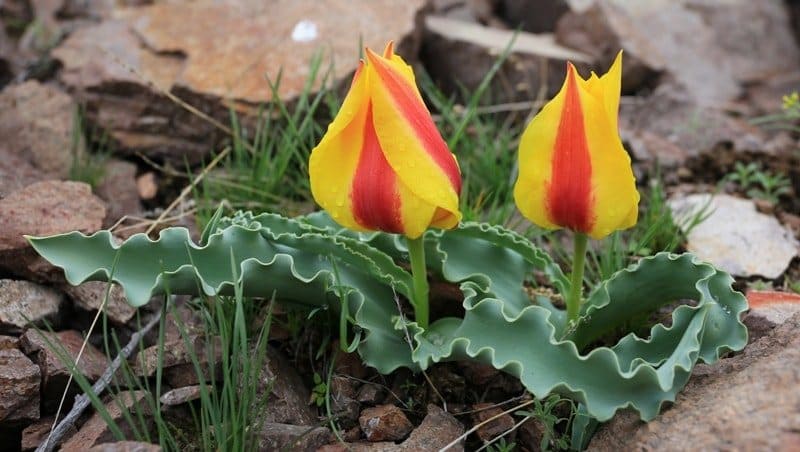
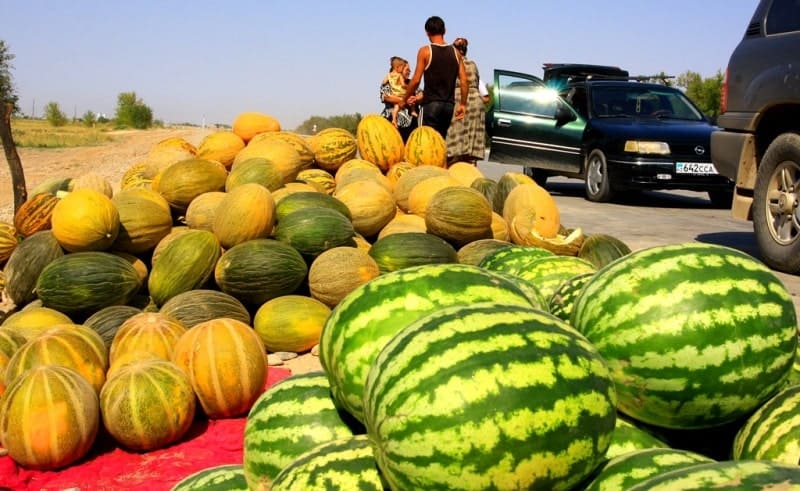
Authority:
N. A. Gvozdetsky, N. I. Mikhaylov. "Physical geography of the USSR. Asian part. The edition third corrected and added. Moscow "Thought" of 1978. http://tapemark.narod.ru/geograf/1_5_5.html
Photos by
Alexander Petrov.







